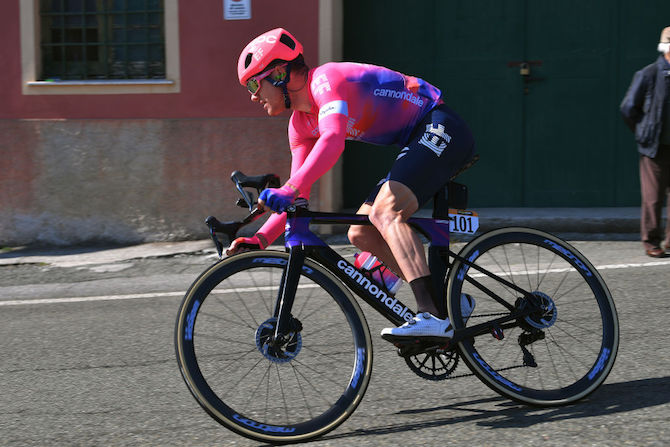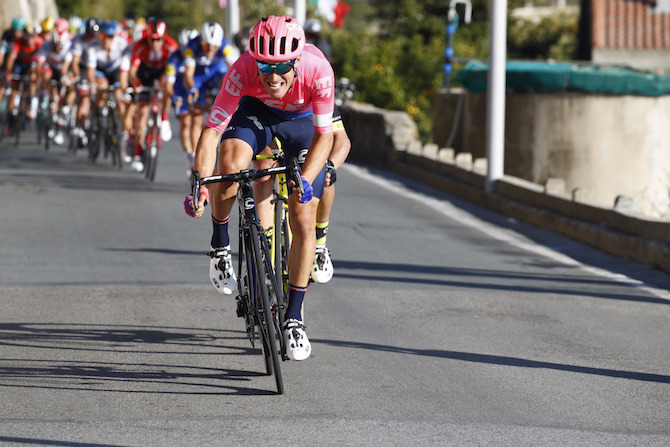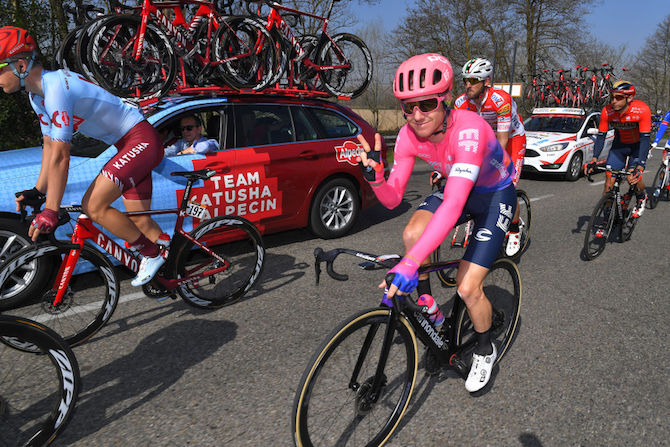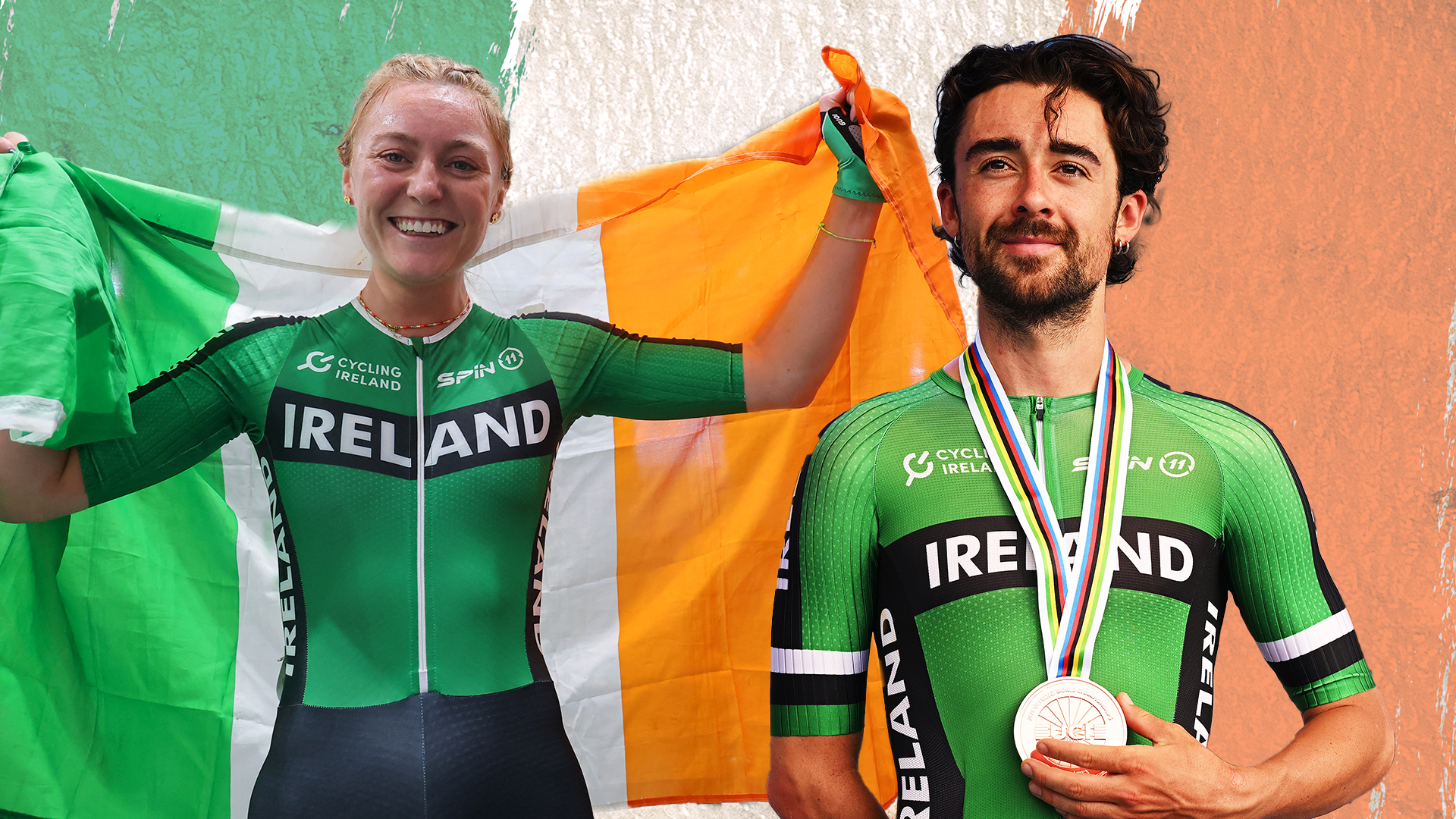Bettiol and Clarke animate Milan-San Remo for EF Education First
Italian attacks on Poggio, Australian chases back to front group on descent



The attack by EF Education First's Alberto Bettiol approaching the top of the Poggio at Milan-San Remo on Saturday drew a response from eventual winner Julian Alaphilippe (Deceuninck-QuickStep) – which caused the race to explode into life. Bettiol's teammate, Simon Clarke, then gave chase, and secured a top-10 finish for the American outfit in the reduced-group sprint on the Via Roma.
"If you can attack on the Poggio it means you're strong," Bettiol told Cyclingnews at the finish. "And I felt good in the finale of the race. But it's also a huge disappointment because, when Alaphilippe caught me, I felt like a complete idiot because I realised I'd blown my chance. If I’d waited and saved my power for a little later, I could have perhaps attacked to go away with him."
Bettiol added that he'd suffered cramps at the recent Strade Bianche, which prevented him from riding as strongly there was he would have liked, and so feeling good at a key point of one of the world's most-famous races wasn't an opportunity that the Italian was going to let pass by.
"Milan-San Remo finally proved to be my moment, and I went for it," he said. "When the road eased, the Deceuninck-QuickStep riders spread across the road for a moment, and the pace dropped. I just went for it and can't even remember what the rest of the Poggio was like.
"But I didn't race intelligently," Bettiol admitted. "I just switched my brain off and went for it."
Behind him, Australian Simon Clarke had a good view of his EF Education First teammate's move, but also admitted that things may have played out differently if he'd been in slightly closer attendance.
"Bettiol attacked, and I kind of went on the defensive and thought, 'OK, if he's going to go, I just need to ride a little bit conservatively here,'" Clarke told Cyclingnews. "And then when they went over the top of him, I just followed as fast as I could.
The latest race content, interviews, features, reviews and expert buying guides, direct to your inbox!
"I actually made a mistake," he said. "I was too far back, but maybe that worked out better in the end. If I'd been too far forward, then maybe I would have tried to have followed with them and would have blown myself up."
In the company of Bahrain-Merida duo Vincenzo Nibali and Matej Mohoric, Clarke was left chasing the elite front group down off the Poggio, which included Alaphilippe, Peter Sagan (Bora-Hansgrohe), Movistar's Alejandro Valverde and AG2R's Oliver Naesen. And although the 32-year-old did catch the lead group, and sprinted home to ninth place, the effort to get back on terms had proved to be a bit too much.
"I tried to make the most of the sprint, but I'd used up all my legs trying to get back up to that front group, so by the time I did get back, I was pretty done," Clarke said.
"The pace was just so high coming off the Poggio. We were already pretty much sprinting on the descent, and were just 'red-lining' all the way to the finish, so I only finally had a breather after we did the chicane there with a kilometre to go.
"I was just happy to be in that company, if you look at that top 10. Those are some pretty special people to be with. And being my first top 10 at a Monument, I have to say that it's pretty satisfying," he said.
"The most important thing is that we showed we were in the race," concluded Bettiol. "The whole team did that. Milan-San Remo is a Monument, so it's a massively important race.
"For sure, it's been a lesson learned for next year, and I'm determined to come back next year and do even better."
